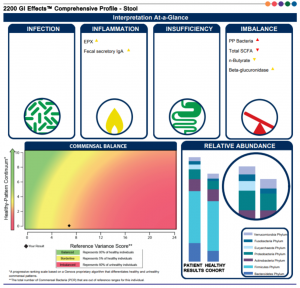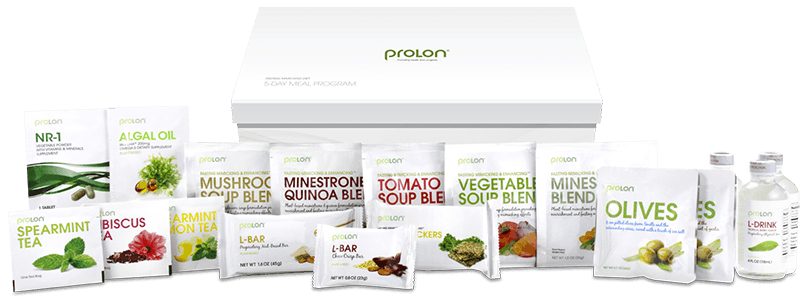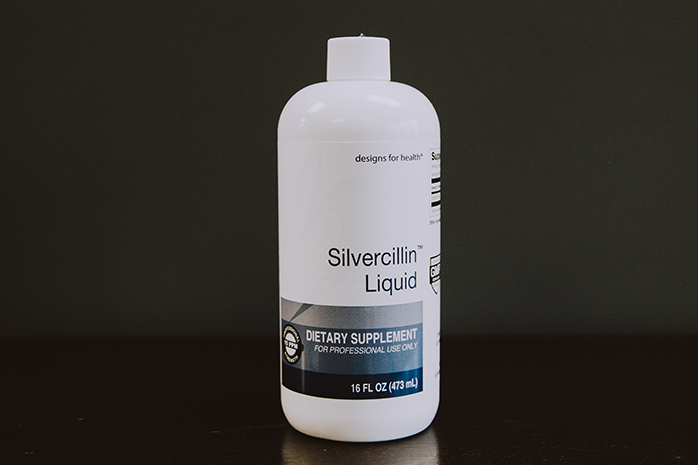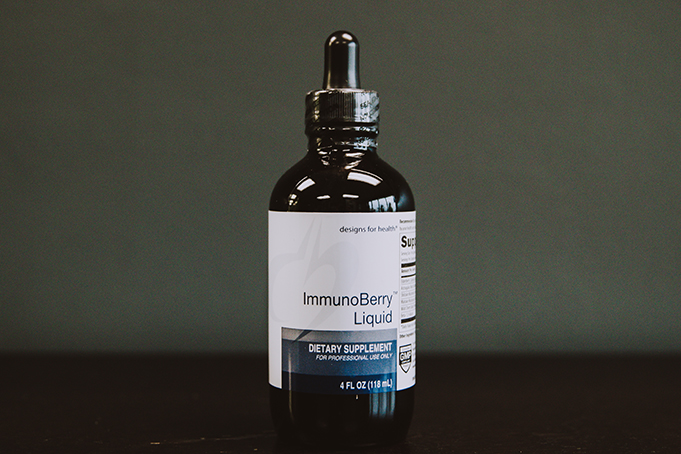Turack Tells All: The 101 on Food Allergies
Lately, we hear all the time that food allergies are on the rise. Doctors and medical experts say food allergies are a growing public health concern. There’s no doubt food allergies are very real. In fact, they can be deadly. But there’s also a growing concern that the allergy tag is being overused right now.
A recent report from the National Academy of Sciences summarized that it’s difficult to know exactly how many people in the United States have a food allergy. It’s also difficult to determine if the number of people with food allergies is legitimately on the rise.
A quick Google search tells us that an estimated 15 million people in the U.S. have food allergies. You can even find a breakdown of that number. 9 million adults and 6 million children. But here’s why I’m in the “We just don’t know!” crowd. At least for now.
Many Food Allergies Are Often Self-Diagnosed
People self-diagnose themselves with a food allergy all the time. Someone gets a phlegmy cough or an upset stomach after eating something. They or their parent immediately self-diagnose it as a food allergy. Or they mention it to a doctor who says, “Sounds like a food allergy!” There’s never any test to confirm. Perhaps there was one test when you were five-years-old and no follow-up. You just stay away from whatever it is you ate that didn’t agree with you. Citing your suspected allergy for years and years.
I suspect that many are misinterpreting symptoms of food intolerance/food sensitivity as a food allergy. Approximately 80 percent of the U.S. population is believed to have a sensitivity or intolerance to certain food.
It’s very common today to hear someone mention that they’re lactose intolerant or suffer from non-celiac wheat or gluten sensitivity. Take a stroll down the aisle of a grocery store and you’ll see packaging with words like “Lactose Free!” or “Gluten-Free!” in bold or highlighted print. Such conditions have become super commercialized. There’s clearly money in targeting these folks.
Does that mean the people these products target have a real food allergy? The short answer is “no.” Food intolerance is a non-allergic (non IgE) hypersensitivity to a certain food. You don’t feel well. Your stomach may be upset. There may be a feeling of malaise or sluggishness. Some brain fog and a sense that you’re not optimally running physically or mentally.
But there is no Anaphylaxis response (life-threatening swelling of the airways) within minutes of digestion like there is with a legitimate food allergy. The symptoms of food sensitivity or intolerance just aren’t as severe or potentially life-threatening as those of a true food allergy. That said, there is indeed an overlap in symptoms. An overlap that has unfortunately made diagnosing a food allergy very difficult.
Milder symptoms of a food allergy may include a stuffy nose, throat clearing, a cough, hives, itching, and GI distress. Many of these same symptoms can also be found in cases of food intolerance or sensitivity. A severe immune system response to a food allergy can include all of the above but also more dangerous swelling of the lips, tongue, and throat, difficulty swallowing, shortness of breath/wheezing, vomiting, a serious drop in blood pressure, a weak pulse, multiple organ failure, and even death.
The Kids Aren’t Alright
Kids have always been the most affected by food allergies. Traditionally, childhood allergies to wheat, milk, eggs, and soy generally are resolved by the time a child starts school. It’s the allergies more likely to induce a severe immune system response – peanuts, fish (tuna, salmon, and cod), tree nuts (walnuts, pecans, cashews, pistachios), and shellfish (shrimp and lobster) – that tend to be lifelong.
However, we’re finding out that kids today are slower to outgrow milk and egg allergies than previous generations. There are increasing instances of these conditions now persisting well into adolescence. Many children today aren’t developing a tolerance to milk and eggs until they’re 16 years-old or older.
One theory is most parents these days immediately put their child on a dairy-free diet once an allergy is suggested. So there’s no gradual exposure to milk and eggs over time for the child to build up a tolerance to them.
But you also can’t blame the parents for this. There are so many horror stories about children having a mild reaction when eating something the first few times but a severe reaction another time they try it. So, what’s the big deal if the house switches to a dairy-free plant based protein milk or an alternative like soy milk, almond milk, or coconut milk assuming there’s no allergy to those substitutions?
There is much data suggesting that the prevalence of food allergies among children is indeed on the rise. In 2013, the CDC reported that food allergies among kids increased by approximately 50 percent between 1997 and 2011. It’s estimated that one in every 13 children today has a food allergy. That number was once about 1 in 25. But there’s again no way to tell how many kids are wrongly diagnosed with food allergies due to flaws in testing or if they’ve outgrown a legit test result but were never re-tested.
A CDC report found that more than 300,000 ambulatory visits a year are due to food allergies among children under the age of 18.
In fact, severe allergic reactions to food have skyrocketed nearly 400 percent over the past decade, according to a study released by the nonprofit healthcare organization FAIR Health.
This is all very concerning and a reminder that we’ve got to find ways to distinguish between food allergies and food intolerance/sensitivity moving forward. This comes down to improved testing, monitoring, and management.
The Emotional Health of a Child with Food Allergies (And His or Her Parents)
Being a kid is hard enough as it is. A child with food allergies faces even more challenges.
First, there is constant stress and anxiety from both the parents and the child. Kids can literally find themselves scared to eat. Parents can find themselves fraught with panic anytime their child is at a friend’s house for dinner, a sleepover, a picnic, or airplane ride. Many parents can go as far as homeschooling their child to keep them out of harm’s way.
Parents must talk to their children about their food allergy. Kids need to understand that certain foods can make them very sick. Particularly if we’re talking about peanut, tree nut, fish, or shellfish allergies since reactions to those can be fatal. They need to understand that what they’re allergic to can be masked as an ingredient in something else. If their allergy is severe enough that an EpiPen needs to be carried, they need learn how it works. Some communication and education can do a lot to calm all parties down.
There is also another worsening problem. A 2012 study published in Pediatrics reported that 30 percent of kids with food allergies are bullied. This suggests a social stigma towards food allergies. Kids that can’t participate in the most basic of social interactions – the ritual of sharing food in a group – are shunned and seen as outcasts.
For instance, if cupcakes are brought to class, a child with an egg allergy will decline. This means they can’t be part of the group of kids celebrating a holiday or someone’s birthday. Some schools, sometimes out of fear of liability or in an effort to make those with food allergies not feel ostracized, will place restrictions on what treats can be brought to school. This can unfortunately create further hostility towards the students known to have food allergies.
Why I’m a Proponent of ALCAT Testing
I believe in whole body wellness. Finding the root cause of whatever hurts or is ailing someone. This is why I administer ALCAT testing at my Wexford, PA office to any patient with a suspected food intolerance, sensitivity, or allergy.
Some naysayers will say, “But the ALCAT doesn’t measure IgE antibodies and therefore isn’t an accurate test for food allergies.” This is partially true, it’s a food tolerance test, but I personally believe that we offer the most reliable food allergy testing in Pittsburgh. Here’s why.
There really isn’t one skin or blood test available to accurately determine whether or not a person is allergic to one specific food. Let’s use the common skin-prick test as an example. In this test, the patient is scratched by a needle that’s coated with proteins from the suspected food allergen. Signs of irritation are present 50 to 60 percent of the time whether the person has a legitimate food allergy or not. This can lead to many false positives.
As far as a blood test for food allergies, IgE antibodies in the blood should produce inflammation and irritation when stimulated by the allergen. But these allergen-specific antibodies are often times too low – even in those with a food allergy – to produce that desired response in a simulated food allergy test.
The ALCAT effectively measures the body’s reaction to over 350 foods, chemicals, and mold particles. My team and I can decipher between reactions indicative of a food intolerance/sensitivity issue and the more severe adverse reactions indicative of a food allergy.
From there, I can tell you which foods are safe to consume, which foods should only be consumed in moderation, and which ones you need to avoid altogether. Of course, you and your family care physician are encouraged to conduct further food allergy testing using my findings as a baseline.
If you’d like some help determining if it’s a food allergy or food intolerance/sensitivity issue impacting your overall health and well-being, call Turack Chiropractic today at 724-940-3499. Ask about our food intolerance, food sensitivity, and food allergy testing in Pittsburgh, PA.







 By asking questions about your diet, lifestyle and genetic makeup, a functional medicine doctor can gain a comprehensive look at what is happening in your life, which can then affect your body. After all, a middle-aged man who sits at a desk for seven or more hours, five days a week, a working mother who has a lot of stress at home and at work, and a weekend athlete might all have back pain. The reason for the pain would be different for all three individuals and, if the reason is different, the treatment should be different.
By asking questions about your diet, lifestyle and genetic makeup, a functional medicine doctor can gain a comprehensive look at what is happening in your life, which can then affect your body. After all, a middle-aged man who sits at a desk for seven or more hours, five days a week, a working mother who has a lot of stress at home and at work, and a weekend athlete might all have back pain. The reason for the pain would be different for all three individuals and, if the reason is different, the treatment should be different.





